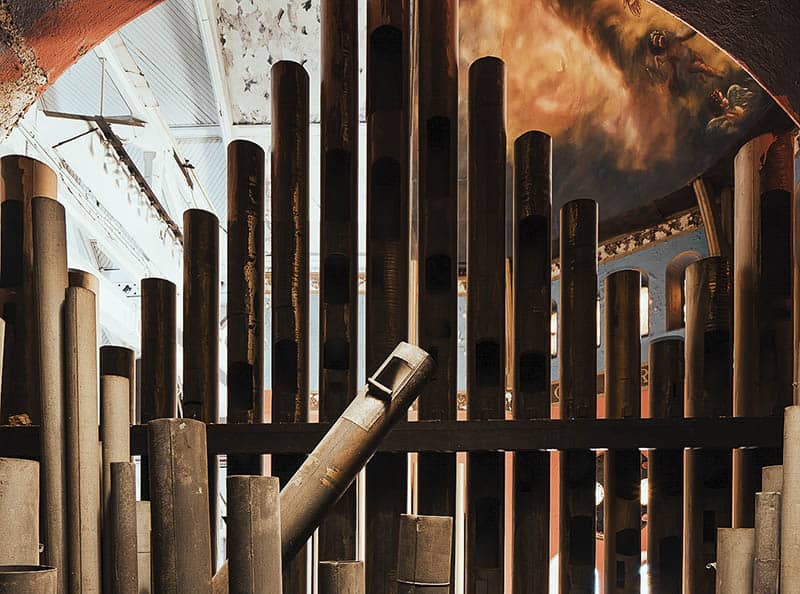An Interview with Adrian Binkley from the Curtis Institute of Music
Playing and Preserving, is a groundbreaking initiative from Partners for Sacred Places to generate public support for the preservation and the active use of Philadelphia’s organ heritage.
Why is Playing and Preserving so important? Because the ever-changing cultural, musical, technological, and religious landscapes in Philadelphia over the last two-to-three decades have left historic organs at risk: it’s likely that over 50 percent of the instruments featured in the Organ Historical Society’s 1996 national convention in Philadelphia could be partially destroyed, dormant, or unplayable.
Adrian Binkley, a senior at the Curtis Institute of Music, has taken on the task of surveying some of those historic instruments and deciding if they’re viable for restoration. Adrian and his team are working on assessing an initial list of around 50 instruments by the end of the year. With most of the survey completed, Partners has already invited a small group of churches to receive funding and support to make repairs to their instruments. While it might seem difficult to choose just a few of these historic pieces of history to preserve, Adrian says it depends on many external factors as well.
“We think about not only the surrounding community of the church, but also more logistical things, like how the building is structured and if there are any sort of other repairs that would have to happen in order to maintain the integrity and safety of the instrument,” Adrian said. “For example, some places might have ceiling cracks or water leaks, and we would want to take those into account because they would also have to get fixed. Before we put a new instrument in, we’d have to make sure that it isn’t affected by any weather conditions.”
In addition to those external factors, information about the organs themselves play a big part in the survey. When visiting each church, the survey team uses a survey tool to capture information about the the organ builder, care and maintenance of the instrument, when was it installed, and more.
“We take note if there were unique features about any of the instruments. And we track things like having a full stop list for the manuals and the pedals.”
Adrian says that the good news is that not all the instruments are destroyed.
“There are a number of pipe organs that I’ve found that are actually almost in perfect playing condition,” he said. “Sometimes they’ll have just a few pipes out of tune or have maybe one or two dead notes over the whole organ, but otherwise will still be very operational.”
That’s great news for the Playing and Preserving mission. While Playing and Preserving only has funding for restoring a few select instruments, saving the historic organs that are still in good shape may be do-able for less time and money than one would expect.
“We’ve seen instruments that have not been turned on in 20 or 25 years, and they’ll just be collecting dust and half their space taken up for storage.”
One way to preserve these organs? To start playing them!
“It is very niche, but we do actually have a growing community of interested students in the pipe organ,” Adrian said. “It’s at a strange crossroads because [the organ] is so tied to the life and health of the church that it’s sort of inseparable from that external world, which is very unique among the classical music instruments. Beyond maybe voice — in roles like opera — most other instruments are just more well suited to classical music itself and not tied to any external organizations or sort of religious faith.”
Part of Playing and Preserving’s mission is to foster an appreciation for organ music and the beautiful moments that it creates, both in churches and in concert. Part of building that interest among young people is hosting free concerts for the Philadelphia area. Playing and Preserving’s community concerts have been incredibly successful, and have brought new awareness to organs across the city.

